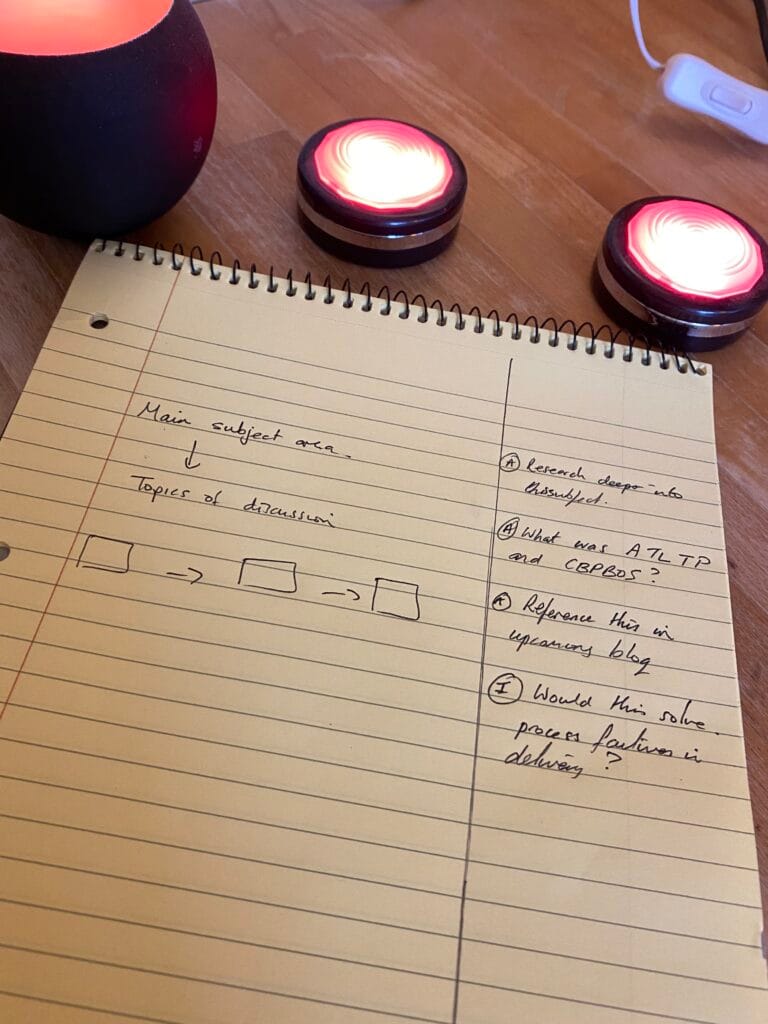note taking

The Cornell Note Taking Method was something I discovered about 10 years ago and promptly ignored it. It is boring, but effective.

The Cornell Note Taking Method was something I discovered about 10 years ago and promptly ignored it.
It sounded boring, corporate, academic and not the dynamic note taking method I thought I needed. Then I tried it one day and I’ve never looked back.
Here’s a video, or read on for more.
For a history of the method and a deeper dive by the very people who created the Cornell Note Taking Method, this article is worth a read.
The basic idea of the Cornell Note Taking Method is to carve off a portion (typically around a third) of your notebook, and use that space for actions, ideas, specific points and reflections from the main bulk of the content.
Let’s say you use it during a meeting at work. The main bulk of the meeting content, such as decisions, comments and discussions are documented and scribed in the main part of your page, then actions, insights, thoughts and ideas are written in the smaller carved off section.
This is the Cornell Note Taking Method in a nutshell.

The Cornell method works because you don’t have your ideas, actions and reflections in the main bulk of the notes; they are in the carved off section of the page.
They can be easily seen, actioned and separated from the main bulk content and information.
I use this method for meetings and learning notes specifically. I also sometimes use this when I'm writing out my Keynote talks in long-hand. I explain that process in my book Zero To Keynote.
The Cornell Note Taking Method works for me because it gives me clarity and visibility between main notes and things that are interesting to me.
I can quickly see the side notes, actions and insights that I found interesting or need some further action, without having to read through the main bulk.
For more on the “legend” system I use check out this article on how to take better notes.